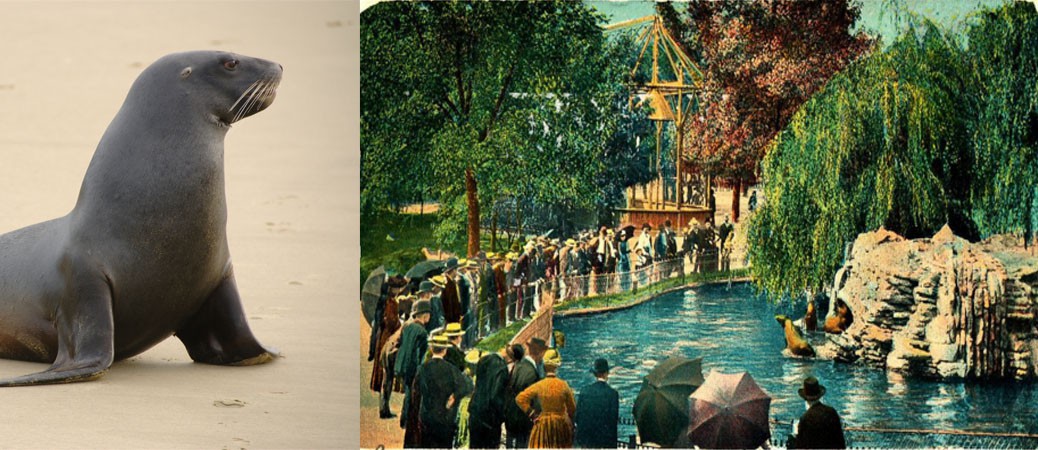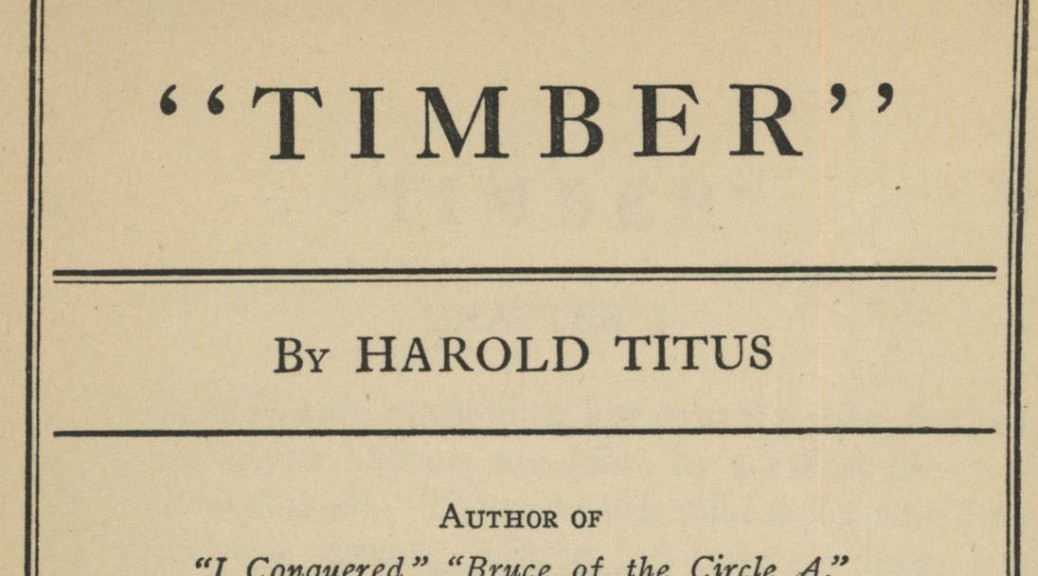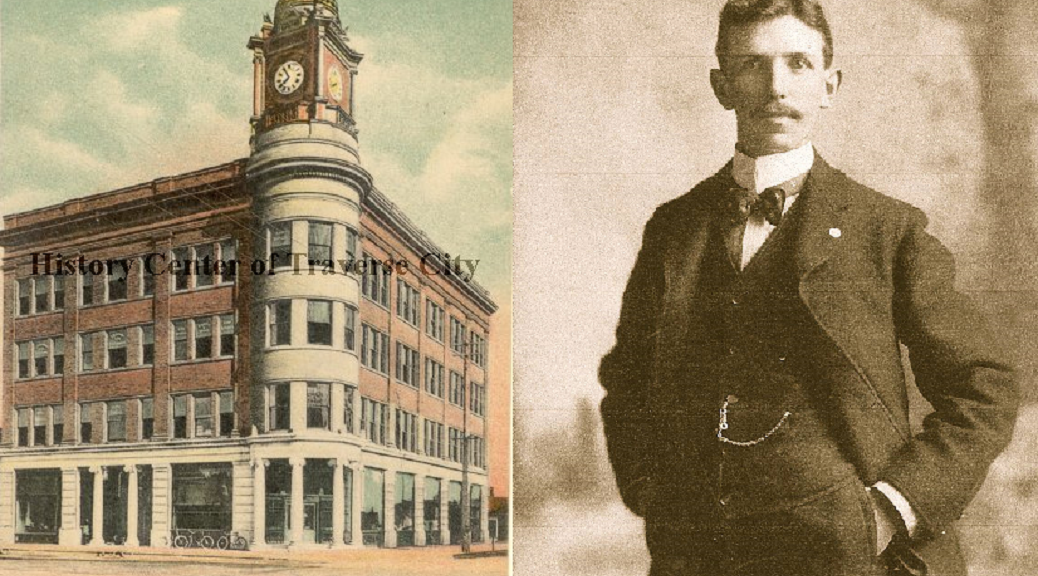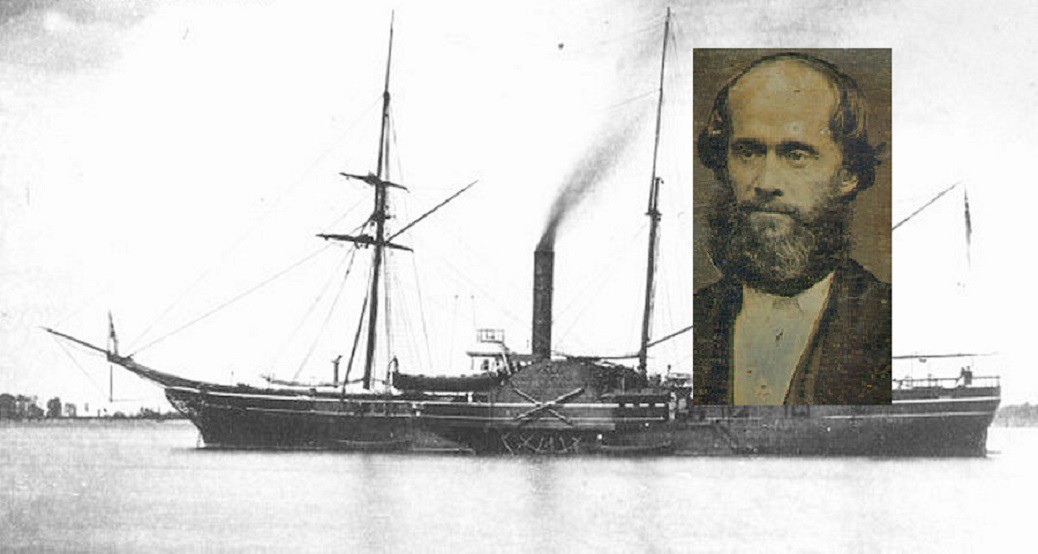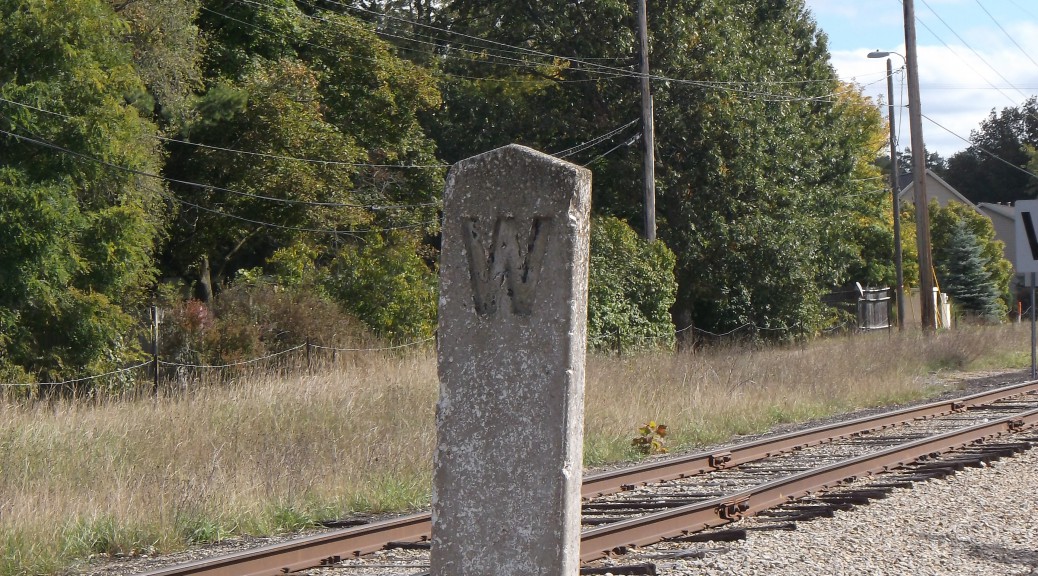by Julie Schopieray
People in general are fascinated by the unknown: Bigfoot, Loch Ness, and UFOs. What is it about the unexplained that keeps us interested?
Historically, our region is no exception. Around the turn of the twentieth century, sightings of strange creatures in the waters of Northern Michigan were quite common- some real, most imagined. The best known at the time was the famous sea serpent of Petoskey, which showed itself in Little Traverse Bay for several summers in the 1890s and became a novelty that resorters looked forward to each summer. The mystery was solved in 1895 when it was discovered to be nothing more than a “very crooked tree trunk that has been beating about in Little Traverse Bay for years. Its peculiar shape and the fact that it had become black with slime…gave it a very serpent-like appearance.” The Petoskey sea serpent was celebrated for many years even after its real identity was discovered. Their baseball team was even called the Petoskey Sea Serpents— complete with a plaster serpent mascot that traveled with the team.
Other creature sightings occurred at various resort areas such as Omena and Harbor Springs. Most people made light of the sightings and it was all for fun.
Distinguished Monster Here for his Annual Outing Near Omena. The resort business of the north is now assured as the regular summer attraction has arrived and has begun daily performances near Omena. The Sea Serpent, which has been so minutely described by summer visitors for several years, made his first appearance a few days ago and was seen by two carpenters working at Omena Inn. He seems to be in the best of health and looks as if he had enjoyed life the past few months. Just what his scheduled program for the summer will be the Eagle has been unable to learn but he will no doubt be friendly at all the ports and pay Traverse City a visit too.” [Daily Eagle June 1898].
In 1903, a “sea serpent” in the Boardman River near the Cass St. bridge drew attention from curious locals. “County Treasurer George W. Steward claims to be the discoverer of the monster, and may be seen frequently pointing out the “horrid green monster” to his friends. “It” is there all right, and his friends can see it for themselves, but it doesn’t move, and seems to be located in the same place all the time. Of course, it is sunning itself, but then, too, it may only be weeds and water grass collected together, which gets its snake-like motion from the current of the river…Anyhow, it is there. ~Traverse City Evening Record 17 July 1901
In the summer of 1907 several people saw in West Bay, what they claimed was either a sea serpent, walrus or a sea lion. On June 25, the newspaper reported that Captain Dave Duane spotted something on the beach, was four feet or more long and “barked like it was a sea lion” . The Captain was in a rowboat when “dead ahead there sounded a terrific splash and a noise, half grunt, half bark, followed it… a moment later he was drenched by another splash…as the tail of the sea serpent, sea lion, octopus or whatever it is, broke the surface. He had just time enough to catch a glimpse of a body perhaps four feet long and seemingly covered with a dark brown hair. The head of the animal was flat and the nose pointed while two sharp white tusks protruded from the mouth. Others saw it as well, and the newspaper reporter stated that “the telephone in the Record office buzzed frequently…the news that a real live sea serpent… on the west side travelled rapidly.”
A day later Frank Birdsall claimed that he saw a very large animal that had to be either a seal, sea lion or walrus. Mr Birdsall was sitting on the beach near their home just after sunset when a fish leaping from the water attracted his attention. The fish jumped again in a few seconds but this time was followed by a seemingly gigantic form. This so excited him that he took no notice of what happened to the fish. Mr. Birdsall says that he can offer no estimate as to its length but as the animal left the water very near in-shore, he is almost certain that it is covered with scales or else a hard skin instead of hair. There are still many skeptical people in the city but Captain Duane and Mr. Birdsall can readily convince them of the material existence of some aquatic animal. -Traverse City Evening Record, 25 &26 June, 1907
 Word started to spread that perhaps this creature was “Big Ben” a trained, performing sea lion that had escaped in November, 1903 from the Lincoln Park Zoo in Chicago. The Big Ben story made news all across the midwest and sightings continued for more than seven years after he escaped. The incident fueled a series of articles, mostly in Chicago papers –which were widely read by Traverse City citizens– that played up the escape as a humorous event, humanizing the animal and making light of the “motives” of his escape. One poked fun about the animal refusing to return to the zoo until he got union representation and a “nine hour day”, and many others that related sightings to the over-consumption of alcohol.
Word started to spread that perhaps this creature was “Big Ben” a trained, performing sea lion that had escaped in November, 1903 from the Lincoln Park Zoo in Chicago. The Big Ben story made news all across the midwest and sightings continued for more than seven years after he escaped. The incident fueled a series of articles, mostly in Chicago papers –which were widely read by Traverse City citizens– that played up the escape as a humorous event, humanizing the animal and making light of the “motives” of his escape. One poked fun about the animal refusing to return to the zoo until he got union representation and a “nine hour day”, and many others that related sightings to the over-consumption of alcohol.
The legend of the absentee sea lion of Lincoln Park lived on in the press for many years. Several reports of his death were announced beginning in 1904 when his body was supposedly found on a beach fifteen miles south of St. Joseph, Mich., and obituaries continuing as late as 1910 when it was proclaimed that the sea lion had been captured and killed by fishermen in Galveston Bay. The real truth is most likely the earliest account and the 1907 Traverse City encounters with something that looked very much like a sea lion helped sustain the appeal of the missing animal. Sensational stories sold newspapers and continued “sightings” led to the story of Big Ben being drawn out for quite some time.
For Traverse City, this story ends with the two 1907 sightings. Nothing more about the creature is reported, but the mystique of his fate remained and the question of whether an ocean animal could survive for an extended time in the waters of Northern Michigan was debated by many.
In June 1935, another large aquatic mammal was spotted in the bay and confirmed to be a seal. Photographs were taken and the story of the animal made newspapers around the region, even featured in the October issue of Hunting & Fishing magazine. A humorous account of the 1935 sighting, written by Detroit News writer Herbert C. Garrison, was published in The News and in The Michigan Alumnus.
“It seems that for some weeks now the good folk of Grand Traverse region have been coming in from their fishing expeditions saucer-eyed and panting, with reports of having seen some strange marine monster disporting itself in the limpid depths of the bay. These reports have resulted in a series of theories as to the identity of the monster, all of them completely unauthenticated. Among the principal theories were these:
 That it was a sea-serpent …a sea lion…a walrus…a whale…an alcoholic mirage…Primo Carnera [Carnera was a professional boxer of very large size]… Purely in the interest of science, Mr. Sackett the other day determined to seek out the truth of these conflicting rumors, which have kept the neighborhood in a turmoil and have ruined the summer romance business on account of nobody daring to go out for moonlight sails…Sackett assembled himself a sea-going safari consisting of one outboard motor boat, one camera, one pack of films, one harpoon (for defense purposes only)….Sackett before leaving had imbibed only in two bottles of sarsaparilla and a hot dog (this to clear up any misunderstandings falling under the heading of Theory No. 5 above), the Ray C. Sackett Grand Traverse Bay Monster Expedition shoved off with a yo-heave-ho. We now turn to the the written record of the expedition in Mr. Sackett’s own hand, found floating in a sarsaparilla bottle which the intrepid commander dropped overboard to make sure the results of the expedition’s research would be preserved for posterity, even if the expedition itself failed to make shore… “We were proceeding with a spanking breeze on our quarter and approaching a large flat rock, about 500 yards offshore, when McGonigle, who was acting as look-out, sang out: ‘Monster Ho-o-o-o!’…I looked, and yessir there he was, sunning himself on the rock. McGonigle said it was a walrus. I said it was a seal. ‘It can’t be a seal,’ McGonigle pointed out. ‘He ain’t got no hat on. I’ve seen lots of seals in circuses. They always wear hats.’ Well, that was a stumper, until I finally got a great idea. ‘Throw the harpoon at him,’ I ordered. McGonigle threw. The monster caught the harpoon in its mouth, tossed it into the air, and balanced it on its nose when it came down….Then to cinch the matter, the seal looked toward me and distinctly said: ‘Werp!’ According to McGonigle, who hasn’t missed a circus since he could carry a pail of water, this is the old Forepaugh & Sells Bros seal dialect, now almost extinct, and means: ‘Brother, can you spare a herring?’’” Thus was the Grand Traverse Bay Monster identified. As to how he got here, I think I can clear up that point, too., I have been told there was a troupe of trained seals at the Chicago fair last year, and that one of the seals got into a rundown condition because of too much night life and was advised by his physician to take the baths. So he slipped off into Lake Michigan one night, and liked it so well he never came back.
That it was a sea-serpent …a sea lion…a walrus…a whale…an alcoholic mirage…Primo Carnera [Carnera was a professional boxer of very large size]… Purely in the interest of science, Mr. Sackett the other day determined to seek out the truth of these conflicting rumors, which have kept the neighborhood in a turmoil and have ruined the summer romance business on account of nobody daring to go out for moonlight sails…Sackett assembled himself a sea-going safari consisting of one outboard motor boat, one camera, one pack of films, one harpoon (for defense purposes only)….Sackett before leaving had imbibed only in two bottles of sarsaparilla and a hot dog (this to clear up any misunderstandings falling under the heading of Theory No. 5 above), the Ray C. Sackett Grand Traverse Bay Monster Expedition shoved off with a yo-heave-ho. We now turn to the the written record of the expedition in Mr. Sackett’s own hand, found floating in a sarsaparilla bottle which the intrepid commander dropped overboard to make sure the results of the expedition’s research would be preserved for posterity, even if the expedition itself failed to make shore… “We were proceeding with a spanking breeze on our quarter and approaching a large flat rock, about 500 yards offshore, when McGonigle, who was acting as look-out, sang out: ‘Monster Ho-o-o-o!’…I looked, and yessir there he was, sunning himself on the rock. McGonigle said it was a walrus. I said it was a seal. ‘It can’t be a seal,’ McGonigle pointed out. ‘He ain’t got no hat on. I’ve seen lots of seals in circuses. They always wear hats.’ Well, that was a stumper, until I finally got a great idea. ‘Throw the harpoon at him,’ I ordered. McGonigle threw. The monster caught the harpoon in its mouth, tossed it into the air, and balanced it on its nose when it came down….Then to cinch the matter, the seal looked toward me and distinctly said: ‘Werp!’ According to McGonigle, who hasn’t missed a circus since he could carry a pail of water, this is the old Forepaugh & Sells Bros seal dialect, now almost extinct, and means: ‘Brother, can you spare a herring?’’” Thus was the Grand Traverse Bay Monster identified. As to how he got here, I think I can clear up that point, too., I have been told there was a troupe of trained seals at the Chicago fair last year, and that one of the seals got into a rundown condition because of too much night life and was advised by his physician to take the baths. So he slipped off into Lake Michigan one night, and liked it so well he never came back.
There were no further documented sightings of this particular animal and its fate is unknown.
An article about the history of Traverse City sea serpent sightings over the years was written in the popular “The Observer” column in 1948. Author Jay P. Smith first mentioned the famous Petoskey serpent, as well as the 1907 Traverse City incident when “that horrendous creature who, fifty years ago, emerged dripping from the bay, waddled up the beach and stole a whole critter out of the Brosch slaughter house in the southeast corner of the bay and lugged it back into the water. That was, without doubt, one of the best sea serpents Northern Michigan ever produced.” Smith tells of fakes that were planted by pranksters for fun. “One of the smaller ones was the one Art and Bert Winnie built and arranged on a pulley just off the old Hannah & Lay lumber dock with the ropes running to the dock. A person concealed between the lumber piles could pull the ropes so the monster would raise its horrible head above the water, glare around and then submerge. Many old, short people today owe their shortness to having been scared our of several years’ growth by that serpent.” The article concludes with this: “It became necessary for Traverse City to go out of the sea serpent business years ago. The bay got so full of them and people saw so many of them, that summer guests starting going to places where there were no monsters. They darn near ruined this community as a vacation center. So, if you hear any reports in the bay or see one, keep it to yourself. We don’t want to scare our visitors away.” [TCRE 17 July, 1948]
We are long overdue for another sea serpent sighting in the bay, but with today’s technology, the mystique of the unknown would likely be ruined. I think I’d prefer the mystery of whether it was real or imagined as it was a hundred years ago.
Julie Schopieray is a regular contributor to Grand Traverse Journal.

